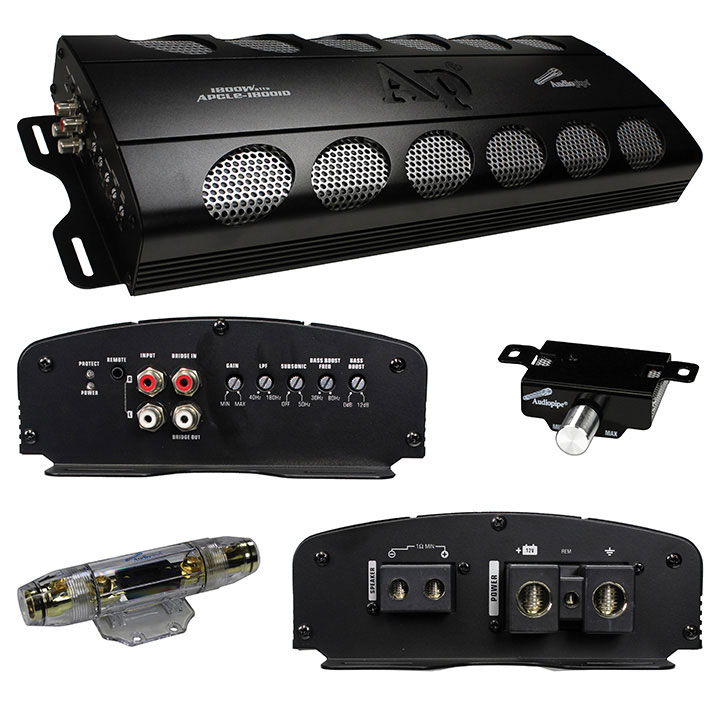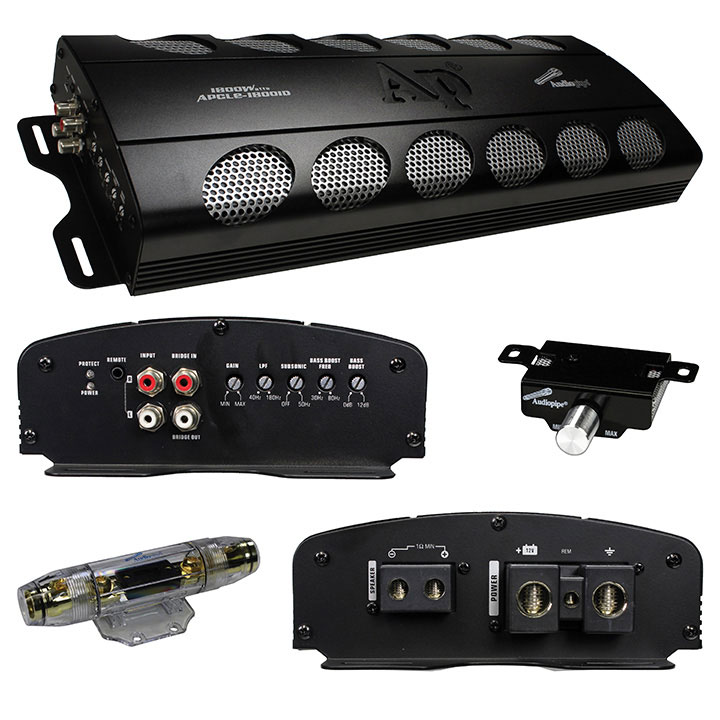Answer
Sep 04, 2024 - 07:02 AM
To determine the wattage of your APCLE18001D Audiopipe amplifier, you need to consider several key specifications and measurements that reflect its power output capabilities. Here’s how you can accurately determine the wattage of your amplifier:
1. Check the Amplifier Specifications:The easiest and most accurate way to determine the wattage of your APCLE18001D Audiopipe amplifier is to refer to the specifications provided in the amplifier’s manual or on the manufacturer’s website. The key specifications to look for are:
- RMS Power Output: This is the continuous power the amplifier can deliver to the speakers or subwoofers without distortion. It is usually provided at different impedance levels (e.g., 1 ohm, 2 ohms, 4 ohms).
- Peak Power Output: This is the maximum power the amplifier can deliver in short bursts. It is not as crucial as the RMS power output because it doesn’t reflect the amplifier's continuous performance capability.
For the APCLE18001D Audiopipe amplifier, typical power output specifications are:
- RMS Power at 1 Ohm: Around 1,800 watts RMS.
- RMS Power at 2 Ohms: Approximately 1,100 to 1,200 watts RMS.
- RMS Power at 4 Ohms: Around 600 to 700 watts RMS.
The actual wattage output of the amplifier depends on the impedance (ohms) of the speakers or subwoofers it is connected to. The APCLE18001D is a monoblock amplifier designed to handle different impedance loads:
- 1 Ohm Load: Highest power output. This configuration delivers around 1,800 watts RMS.
- 2 Ohm Load: Moderate power output. Typically provides 1,100 to 1,200 watts RMS.
- 4 Ohm Load: Lower power output. Generally provides 600 to 700 watts RMS.
If you do not have the manual or specifications handy, and you have a multimeter and some basic tools, you can measure the power output yourself. Here’s how:
Measuring Voltage and Current:
- Disconnect the Subwoofers/Speakers: Disconnect the subwoofers or speakers from the amplifier.
- Set Up a Test Tone: Use a test tone (usually a 50Hz or 60Hz sine wave) played through the head unit or an external audio source. Ensure the volume is set to a moderate level to avoid overdriving the amplifier.
- Measure Output Voltage: Using an AC voltmeter, measure the voltage output of the amplifier at the speaker terminals. Note the voltage reading.
- Determine Current Draw: Use an ammeter to measure the current draw from the amplifier.
- Calculate Wattage: Use the formula P=V×IP = V \times IP=V×I (where PPP is power in watts, VVV is voltage in volts, and III is current in amperes) to calculate the power output. Alternatively, if you only know the voltage and resistance, use P=V2RP = \frac{V^2}{R}P=RV2, where RRR is the impedance load.
Note: Ensure you know the impedance of your test load (usually a resistor matching the impedance of your speakers or subwoofers).
4. Understand Real-World Factors:Keep in mind that the amplifier’s actual wattage output in real-world conditions might be slightly different from the rated specifications due to:
- Voltage Supply: Variations in your vehicle's electrical system voltage can affect power output.
- Heat and Efficiency: Amplifiers generate heat and might reduce power output to prevent overheating.
- Quality of Electrical Connections: Poor connections or inadequate wiring can reduce power output.
If you are unsure about the exact power output or need an official figure, you can:
- Contact Audiopipe Support: Reach out to Audiopipe customer support with your amplifier model number for detailed specifications.
- Consult a Professional Installer: An experienced car audio installer can provide more accurate measurements and ensure your amplifier is correctly set up.
To determine the wattage of your APCLE18001D Audiopipe amplifier, refer to the RMS power ratings at different impedance levels (1 ohm, 2 ohms, 4 ohms). If measuring manually, use a multimeter to check the voltage and current output and calculate the wattage. Always consider the impedance load and other real-world factors that can influence power output.





Add New Comment